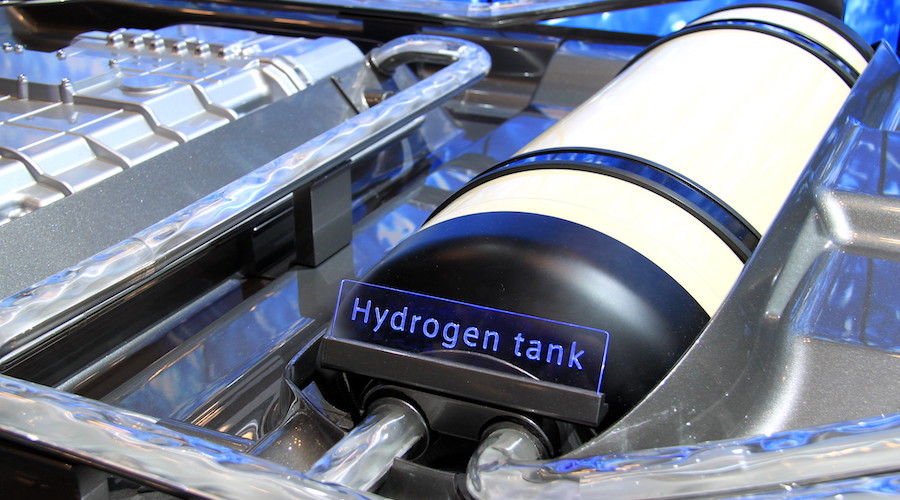How cobalt can help produce hydrogen for clean fuel
 Reference image of a Toyota hydrogen fuel cell. (Image by Joseph Brent, Flickr).
Reference image of a Toyota hydrogen fuel cell. (Image by Joseph Brent, Flickr).
A research team from the Tokyo Institute of Technology created the first visible-light photoanode made of titanium dioxide or TiO2 enhanced with cobalt. The anode is a key element needed to achieve affordable water splitting to produce hydrogen, a clean alternative to fossil fuel.
In a paper published in the journal ACS Applied Materials & Interfaces, the researchers explain that photoelectrochemical water splitting, the process by which light energy is used to split water molecules into hydrogen and oxygen is a promising approach to obtain pure hydrogen for use as an alternative clean fuel.
Through multiple types of spectrometry analyses and scanning electron microscopy, the researchers identified the composition and structure of the cobalt-modified surface of the TiO2 photoanode to understand how cobalt allows the material to absorb visible light to mobilize electrons and cause water oxidation
The process is carried out in electrochemical cells that contain an anode and a cathode submerged in water, which are connected through an external circuit. At the anode, water oxidation occurs, whereby O2 is produced by drawing energy from light waves. These waves transfer energy to the electrons of the anode material, allowing them to move through the external circuit to reach the cathode. Here, the received electrons and the cathode material cause H2 to form.
According to the team, to date, it has been difficult to find photoelectrochemical systems that carry this process efficiently. One of the reasons for this is that titanium dioxide, which is a well-known and widely used photoanode material, can only absorb energy from high-energy light.
Sometimes, TiO2 is mixed with gold and silver to sensitize it to visible light but, as a result, the application becomes expensive.
However, by enhancing the TiO2 with cobalt, it is possible to create a visible-light photoanode.
To do so, thin TiO2 films are grown onto a substrate through a standard procedure and then cobalt is introduced by immersing them into an aqueous cobalt nitrate solution.
This method works because cobalt domains not only capture visible light and transfer charges or electrons at the TiO2 interface but also serve as catalytic sites that facilitate water oxidation.
Moreover, the researchers found that the structure of the base TiO2 thin film affects the performance of the final modified photoanode, presumably by allowing for the accommodation of cobalt atoms. The structure of the TiO2 film can be easily tuned by adjusting fabrication parameters, which allowed the team to carry out multiple tests to gain insight into this phenomenon.
"This study demonstrates that a visible-light-driven photoelectrochemical cell for water oxidation can be constructed through the use of earth-abundant metals without the need for complicated preparation procedures," Kazuhiko Maeda, senior author of the study, said in a media statement.